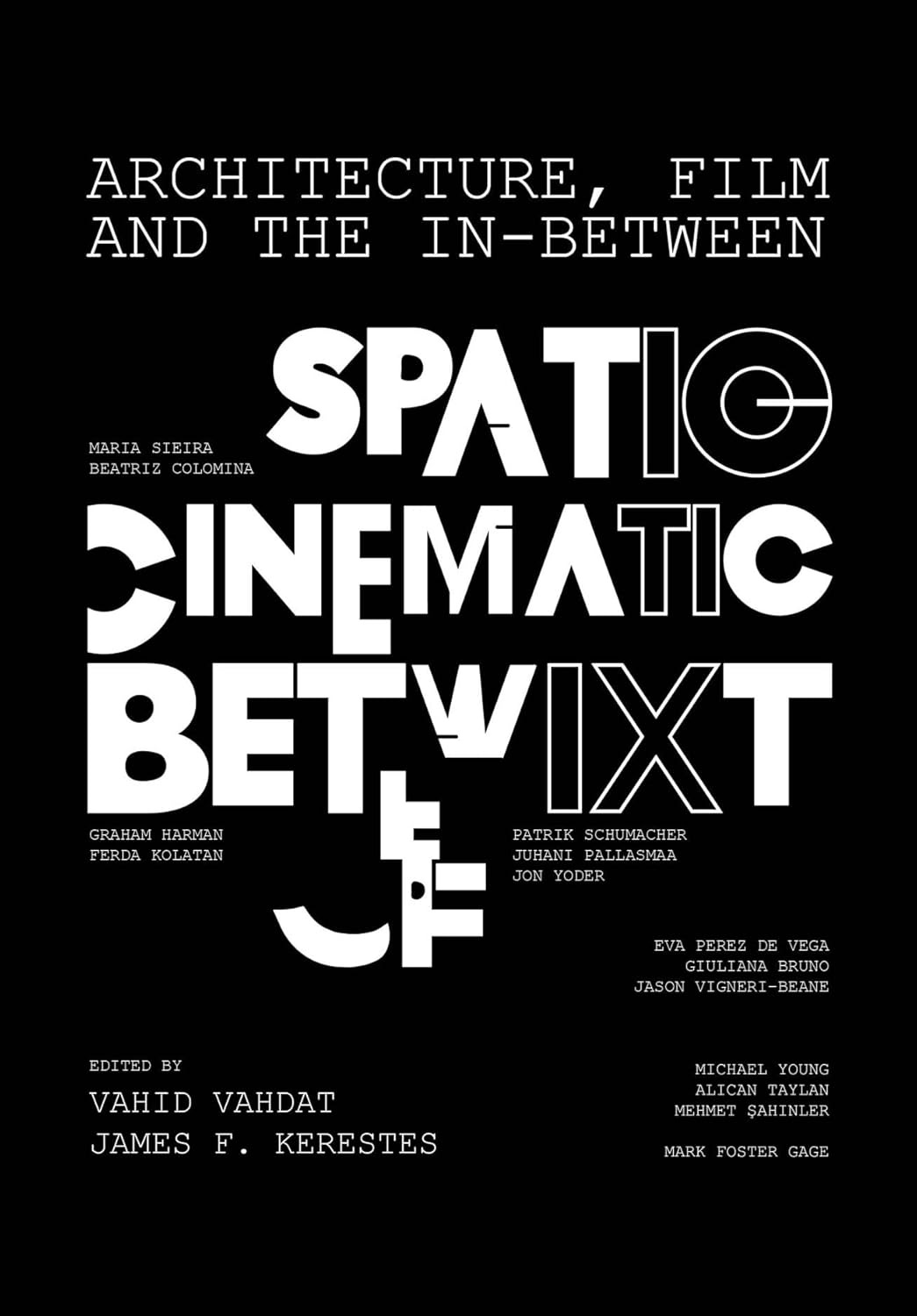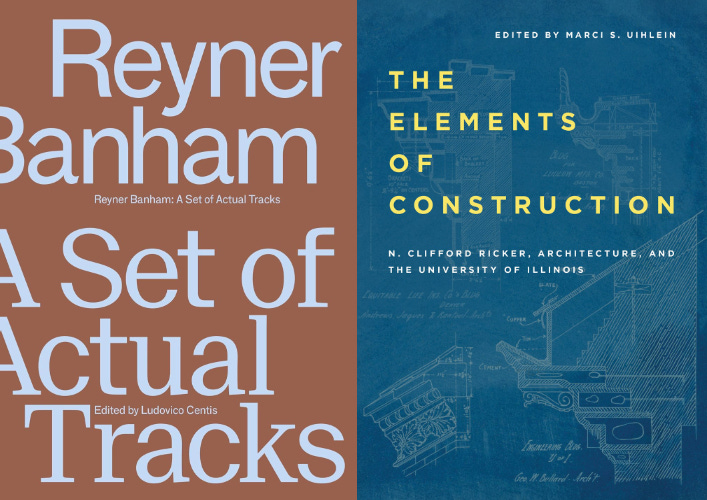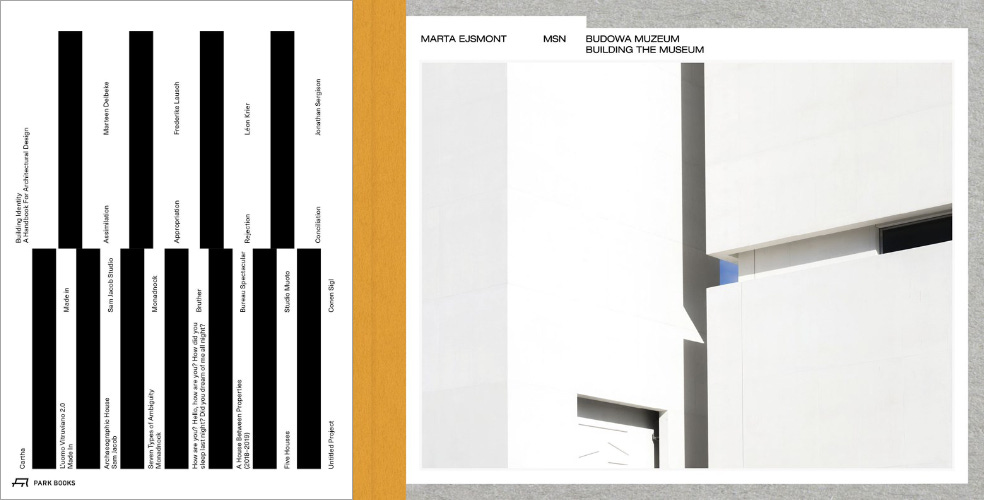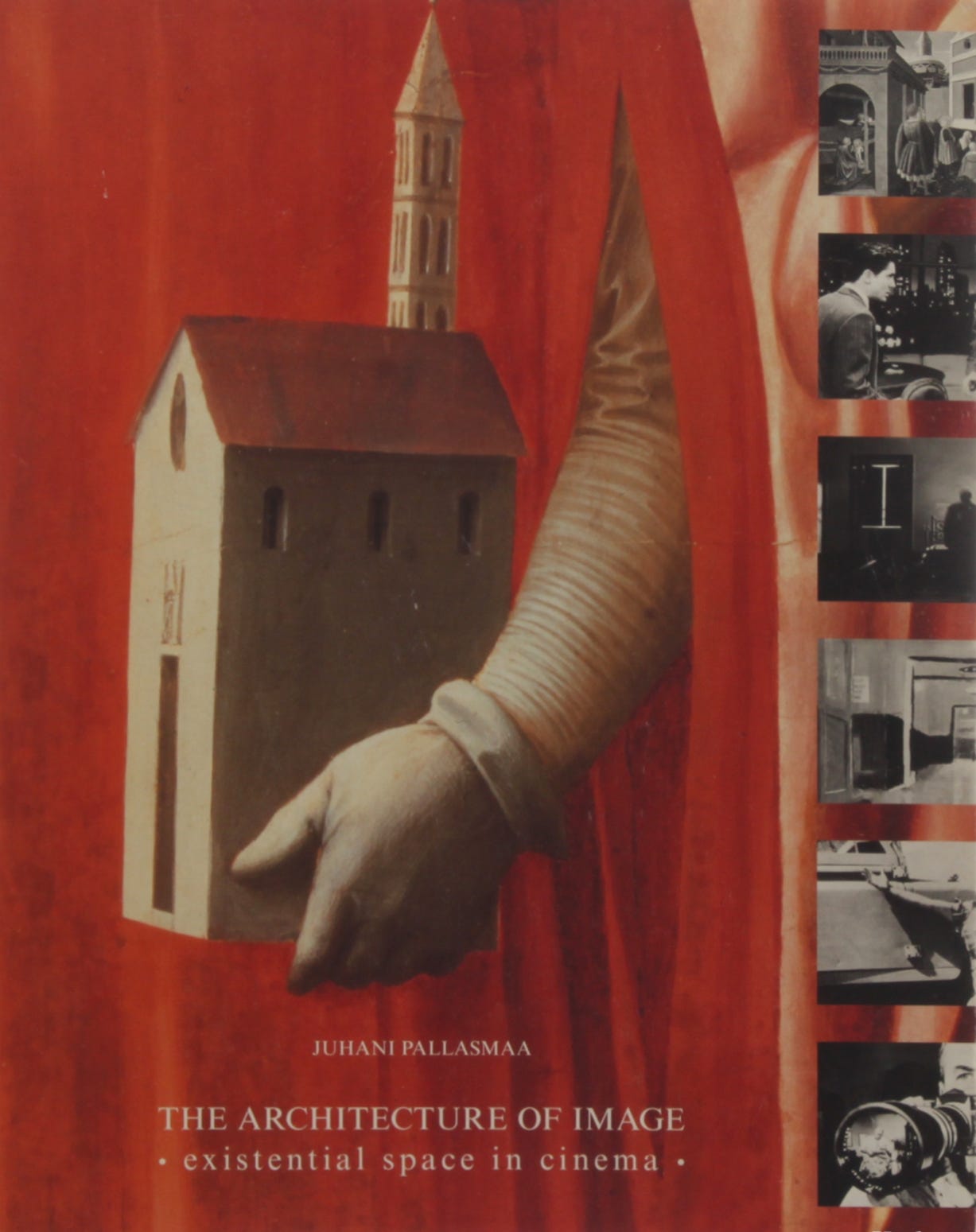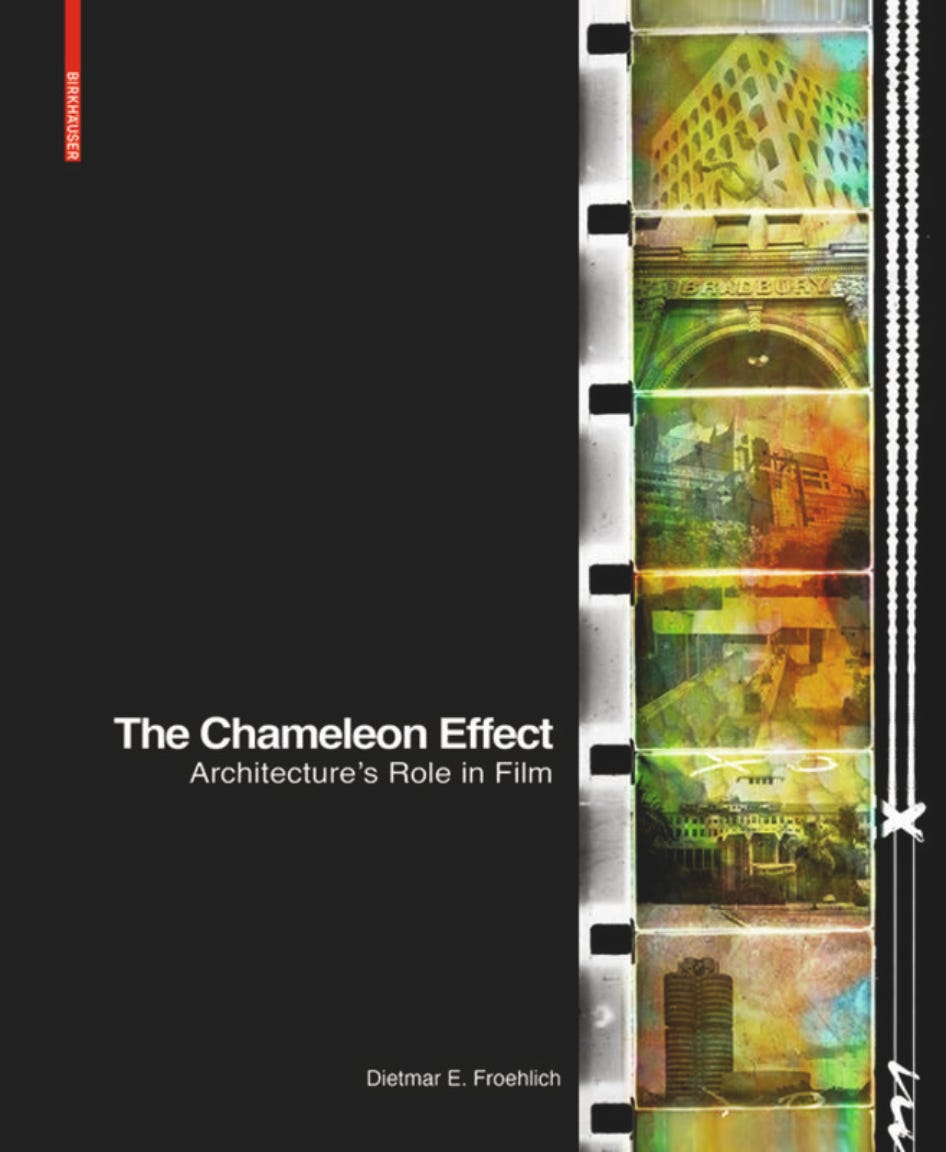This newsletter for the week of March 10 is focused on the relationship between architecture and film, looking at a book published by Intellect last year and a couple older books at the bottom of the newsletter. In between are the usual new releases and headlines. Happy reading!
Book of the Week:
Architecture, Film, and the In-between: Spatio-Cinematic Betwixt, edited by Vahid Vahdat and James F. Kerestes (Buy from University of Chicago Press [US distributor for Intellect] / from Amazon / from Bookshop)
When I learned about and requested a review copy of Architecture, Film, and the In-between, which was published in hardcover in 2023 and in paperback last year, I did not realize UK publisher Intellect had produced so many books at the intersection of architecture and film. Ten years before the essays in Spatio-Cinematic Betwixt was The Architecture of the Screen: Essays in Cinematographic Space (2013) by Graham Cairn, and more recently the publisher put out Architecture Filmmaking (2020) edited by Igea Troiani and Hugh Campbell, Anarchitectural Experiments: When Unbuilt Designs Turn to Film (2023) by Maciej Stasiowski, and Watch this Space: Exploring Cinematic Intersections Between the Body, Architecture and the City (2024) edited by Howard Griffin and Maciej Stasiowski. Even though most of these titles are so far limited to expensive hardcovers priced for academic libraries, this plethora of unknown titles surprised me because I tend to search out such interdisciplinary books on architecture and film. These are books I find intellectually stimulating but also thoroughly enjoyable, especially if parts can be read before or after watching a relevant film. Mark Lamster's Architecture and Film (2000), Juhani Pallasmaa's The Architecture of Image: Existential Space in Cinema (2008), and Steven Jacobs's The Wrong House: The Architecture of Alfred Hitchcock (2013, second edition) are just a few of my favorites.
Although Cairns’s now-12-year-old The Architecture of the Screen (the only other of Intellect’s above titles in an affordable paperback) is enjoyable, given how his film reviews and other texts are aligned to particular architects (e.g., Rem Koolhaas and Run Lola Run), I can't use the same descriptor for the fourteen contributions to Spatio-Cinematic Betwixt. Most of the essays are dense architectural theory that are more interested with the liminal, or betwixt, conditions found in the gaps between these two fields, rather than in drawing connections between them or finding how one influences the other. I even noticed that some of the essays I read did not necessarily discuss film, or even architecture; or they explored art but only tangentially touched on architecture and film. Fore example, Beatriz Colomina’s contribution, “Liminal Mies,” covers some territory that should be familiar to people who have read her earlier texts, such as Manifesto Architecture: The Ghost of Mies; it’s a rewarding read, but the text does not venture at all into film. In “Project Environments, Atmospheric Architectures,” Giuliana Bruno, author of Atlas of Emotion: Journeys in Art, Architecture, and Film, focuses on artist Tobias Pruth, who creates immersive settings for film screenings, many of them impacting how the films are perceived. An essay more indicative of the book as a whole—in that film is in service of architectural theory—is “Ritual, Reality, and Its Double,” in which Alican Taylan and Mehmet Şahinler use the Black Lodge in Twin Peaks to explore theories of rituals as articulated by Victor Turner in his essay “Betwixt and Between: The Liminal Period.”
If someone arrives at Architecture, Film, and the In-between not expecting architectural theories in the vein of contributor Graham Harman’s embrace of object-oriented ontology (OOO), that most likely stems from the inclusion of Juhani Pallasmaa, whose “Veracity of Experience” leads off the fourteen essays. Pallasmaa (mentioned above and included at the bottom of this newsletter) has written accessible and enjoyable books and essays on film and architecture, and this essay is no different. In it he touches on some of his usual phenomenological suspects (John Dewey, Walter Benjamin, Maurice Merleau-Ponty) and filmmakers (Lars von Trier, Fritz Lang, Alfred Hitchcock, Andrei Tarkovsky) to illustrate how architecture and film are connected, how they are able to “articulate and express existential experiences.” Pallasmaa’s ideas may feel dated next to the younger contributors that follow, but by framing them within the liminal “space” between architecture and film, the book’s editors, Vahid Vahdat and James F. Kerestes, make them just as valid as Ferda Kolatan’s “fake architectures,” for instance, or even Patrik Schumacher’s metaverse-focused “spatio-visual framings.” If these phrases pique your interest, you should find something to like in Spatio-Cinematic Betwixt.
Books Released This Week:
(In the United States, a curated list)
Reyner Banham: A Set of Actual Tracks, edited by Ludovico Centis (Buy from Actar Publishers [US distributor for AA Publications] / from Amazon / from Bookshop) — “Sixteen of the acerbic historian’s essays and book chapters have been selected by the book’s contributors, ranging from classics such as ‘The Great Gizmo’ to lesser-known texts, such as ‘The Wall’, an intimate confession he penned at the hospital shortly before his death. Each is accompanied by a contemporary response that contextualises Banham’s text, drawing out reflections on what the critic’s work means today.”
The Elements of Construction: N. Clifford Ricker, Architecture, and the University of Illinois, edited by Marci S. Uihlein (Buy from University of Illinois Press / from Amazon / from Bookshop) — “A pioneer of architecture education in the United States, N. Clifford Ricker notably taught with an emphasis on construction and shop practice in his teaching. Marci S. Uihlein edits and elaborates on The Elements of Construction, the text on building materials that Ricker wrote and used in his teaching, but never published.”
CARTHA—Building Identity by Francisco Moura Veiga, et. al. (Buy from University of Chicago Press [US distributor for Park Books] / from Amazon / from Bookshop) — “Explores the role of architecture in forming identity in society through interviews with renowned scholars and a set of projects by international firms especially designed for this book.” (Previously announced in this newsletter in late 2024, this book is being released this week.)
Building the Museum of Modern Art in Warsaw, edited by Marta Ejsmont (Buy from University of Chicago Press [US distributor for Museum of Modern Art in Warsaw] / from Amazon / from Bookshop) — “This stunning large-format book transcends the typical photo album, offering a captivating visual narrative of the construction of the Museum of Modern Art in Warsaw designed by Thomas Phifer.”
Full disclosure: As an Amazon Associate, AbeBooks Affiliate, and Bookshop.org Affiliate, I earn commissions from qualifying purchases made via any relevant links above and below.
Book News:
“Meet Four Architects Reinventing the Public Library as We Know It”: Over at Cultured, Karen Wong talks to Joshua Ramus of Rex, James Richärd of Richärd | Kennedy, Amale Andraos of WORKac, and Matthew Oudens of Oudens Ello Architecture “about how they apply their keen eye for design to the long-standing art of book display.”
The Architect’s Newspaper reports on the ACSA (Association of Collegiate Schools of Architecture) canceling the fall 2025 issue of Journal of Architectural Education (JAE), an issue that would have focused on Palestine, and firing its interim executive editor. (The story was then picked up by Literary Hub, putting it into a larger context.) The articles were completed last month and were in peer review at the time of the cancellation, so even though the ACSA is pulling the plug on the issue over fears of potential backlash, hopefully the contributions will eventually be published in another venue.
Congratulations to D.A.P. and Designers & Books! Their Kickstarter campaign that launched on February 19 to create a facsimile edition of the ten issues of Archigram: The Magazine is now fully funded. Curious what will be in the reader’s guide accompanying the issues? Read an excerpt of David Grahame Shane’s contribution, “I Remember Archigram, 1963-1970,” at Scratching the Surface.
Parametric Architecture features Rietveld Schröder House: A Biography of the House, “a monumental, 896-page volume [that] challenges long-held beliefs by revealing that Truus Schröder’s influence was far more profound than previously recognized.”
From the Archives:
Juhani Pallasmaa’s 2008 book The Architecture of Image: Existential Space in Cinema is one of my favorite books dedicated to architecture and film. In it, Pallasmaa analyzes five films by four directors: Rope and Rear Window by Alfred Hitchcock, Nostalghia by Andrei Tarkovsky, The Shining by Stanley Kubrick, and The Passenger by Michelangelo Antonioni. I reviewed it on my blog in September 2008, writing in part: “A consistent thread through the book, even though the essays span close to ten years and most were previously published elsewhere, is painting. This stems from the author's personal history but also from the overlap with film in that each artform illustrates architectural space, be it real or imaginary. Some of the most enlightening moments in this highly enjoyable book stem from comparisons of the films to specific paintings, in some cases clearly intentional on the part of the director. This influence and overlap of different forms of expressions is ultimately what the book is about, though Pallasmaa does not push the cross-disciplinary borrowing or rationalizations prevalent in the nineties. His emphasis instead is on the shared qualities of architecture and film, and, as an architect, what the former can learn from the latter towards an increased quality of our being-in-the-world.”
My fondness for architecture and film, and for books exploring the two realms, led me to plop down money for The Chameleon Effect: Architecture's Role in Film, by Dietmar E. Froehlich, when I came across it at a used bookstore about a year ago. At the time I was familiar with neither the book nor Froehlich, a professor at the Gerald D. Hines College of Architecture at the University of Houston, where he teaches design studio and a course on film and architecture. So far I’ve only skimmed parts of the book, but the author’s clear language and evident organization means his thesis is readily found: “Film can be a perfect instrument not only to open the gates of perception but to alter our outlook. This film-generated perception, consciously employed or unconsciously locked, can influence the design of buildings and cities in the future.” The Chameleon Effect of the title corresponds with how a building acquires multiple personalities in film, “either through the way the building is portrayed and perceived, or the way architecture is used in the film and what role it subsequently acquires.” My enthusiasm for Froehlich’s book is tempered by its execution. With its letter-sized paper and (lack of) formatting, the book looks and reads like an academic paper—albeit a laid-back read, especially compared to this week’s Book of the Week. This book, released in 2018, really needed a good hands-on editor and a good designer to take Froehlich’s broad and accessible overview of architecture’s role in film and turn it into something people want to read. As is, it is basically a dissertation printed out on double-sided glossy paper and bound between hard covers. (For a commendable example of a dissertation repackaged for wider consumption, see my review of Designing TWA: Eero Saarinen’s Airport Terminal in New York, by Kornel Ringli.)
Thank you for subscribing to A Weekly Dose of Architecture Books. If you have any comments or questions, or if you have your own book that you want to see in this newsletter, please respond to this email, or comment below if you’re reading this online. All content is freely available, but paid subscriptions that enable this newsletter to continue are welcome — thank you!
— John Hill




